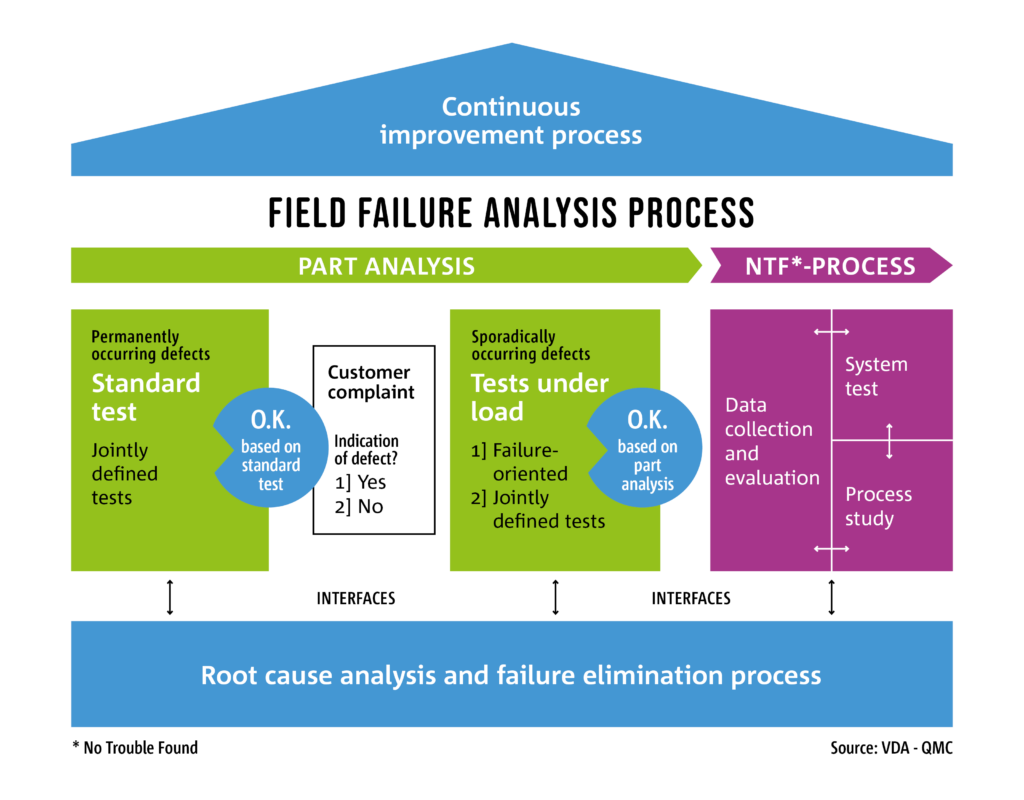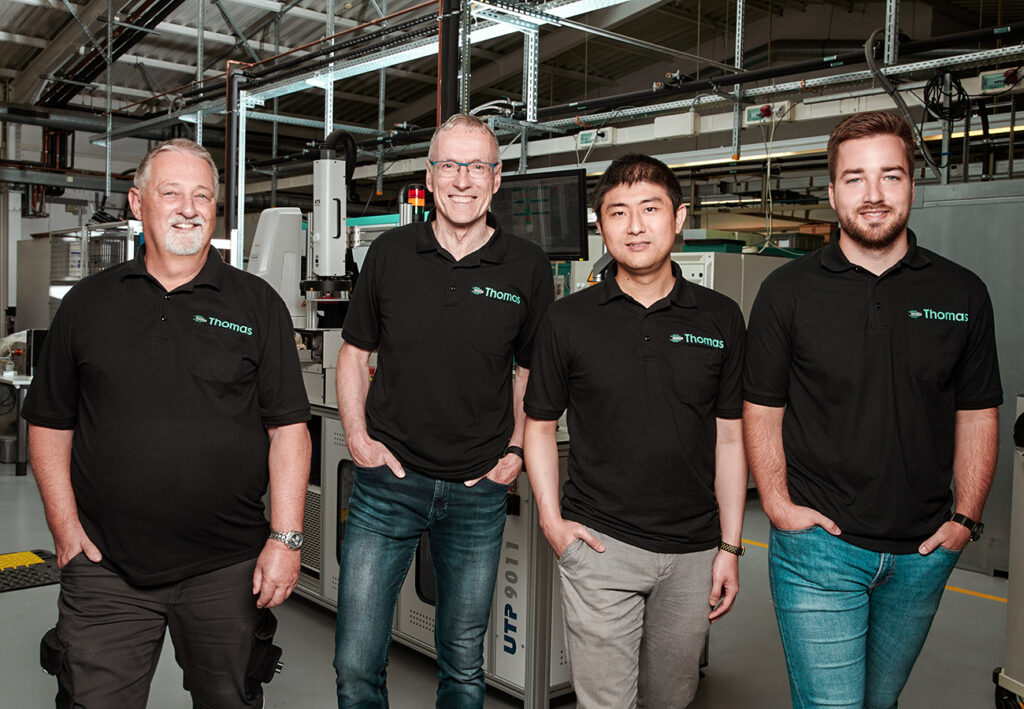Before a component is approved for series production as part of the development process for a new vehicle, it undergoes countless tests – from short tests under load to weathering and endurance tests. This is how automobile manufacturers collaborate with automotive suppliers like Thomas to ensure the desired quality. But what hardly anyone knows is that the quality assurance process continues even after the vehicle has been in service for a long time, through “field failure analysis.”
Underlying the field failure analysis process is a standard introduced by the VDA (German Association of the Automotive Industry) in 2009. Put simply, its purpose is to thoroughly investigate component failures in vehicles that have already been sold and put into service – in other words, in vehicles “in the field” – and to permanently rectify the defect. To this end, the standard prescribes two testing phases for returned automotive components, which examine them for both permanent defects and sporadic faults. This is intended firstly to ensure that the actual cause of a failure is found, and secondly, to also determine, depending on the result of the test, whether the supplier will be held generally liable for the monetary loss incurred by the respective OEM. Against this background, it is therefore not surprising that anyone wishing to supply directly to a German automobile manufacturer will have to meet the VDA standard. This applies to Thomas as well, given that many German carmakers rely on the company’s technology.

Suppliers sent random samples
Naturally, car manufacturers are not able to return every failed part from any location in the world to their suppliers, as the effort involved for both parties would be immense. Instead, certain markets are defined as “sending markets”. Christian Lichtenthäler, Director of Quality Assurance at Thomas, explains the process: “Faulty parts from these specific countries are first sent to a distribution center and from there back to the supplier. The supplier is then responsible for testing the part in line with the VDA Field Failure Analysis standard and for documenting the process and the result. Representative quotas are determined from the defective parts coming from the “sending market,” according to which the supplier must bear the corresponding warranty costs on a representative basis for all such failures worldwide.
Properly executed process is in supplier’s own interest
If during its investigation, a supplier determines that the failure is its own fault, it is not only liable to recourse for this single failure but, depending on agreements made with the OEM, for a large number of such cases: The value of the replaced part is multiplied by a predefined load factor. Depending on the replaced part and load factor, this can amount to substantial sums. It is therefore absolutely in the supplier’s interest to implement the field failure analysis process properly. As Lichtenthäler points out: “On the one hand we want to keep our customers satisfied, and that includes finding the underlying cause of defects and rectifying them. On the other, however, a good field failure analysis can also help to ensure that we are not held liable to recourse.”
The reason for this is that in modern, complex vehicle systems failures can actually be caused by other components or malfunctions. In the event of a malfunction, it is possible that a mechanic might replace all parts affected, and these would then be investigated by the respective manufacturer as part of a field failure analysis process. The objective is to assign the warranty costs incurred to the supplier that caused them.

Thomas quality field engineers need to be highly specialized
The procedure for the field failure analysis is complex. First, there needs to be a standard examination for visible defects and permanent malfunctioning. If this does not detect a fault, the problems are obviously only sporadic and occur under specific circumstances. Therefore, the next step is to determine the conditions causing the failure. “This process is extremely challenging, so we only deploy highly specialized engineers with additional qualifications in quality management and further training as quality field engineers. These engineers are solely responsible for reproducing faults that are occurring in the customer’s vehicle, determining the cause of them, and initiating appropriate rectification measures,” says Lichtenthäler.
Working with the Thomas Quality Laboratory, these engineers simulate the precise environmental and operating conditions in which the respective fault is supposed to occur according to the vehicle owner and mechanic. To do this, the team sometimes has to develop its own processes and procedures. And if the fault cannot be reproduced under controlled conditions, the VDA standard prescribes a ‘no trouble found’ (NTF) process with additional data analyses from various data sources. “Only after all these steps have been completed and a product defect can be reproduced by Thomas does the last and most important step begin: the problem-solving process to determine the cause of the malfunction and rectify it,“ explains Lichtenthäler.
Thomas catches up with the major players
Thanks to massive investments in expertise, personnel, and testing facilities, the company has been able to substantially improve its performance in field failure analysis in just four years. It meanwhile ranks in the top third of all suppliers in audits by carmakers. Lichtenthäler: “We are constantly striving to improve. Especially when it comes to the complexity of our smart systems, we are facing up to the new challenges ahead of us.” Within striking distance of the major players in the automotive supply segment, we can be proud of what Thomas has already achieved – and this inspires the team to do even better.

„
For Thomas, the consistent and systematic application of field failure analysis is an essential component of the long-term successful cooperation with the OEMs, because it strengthens the trusting relationship between us.











